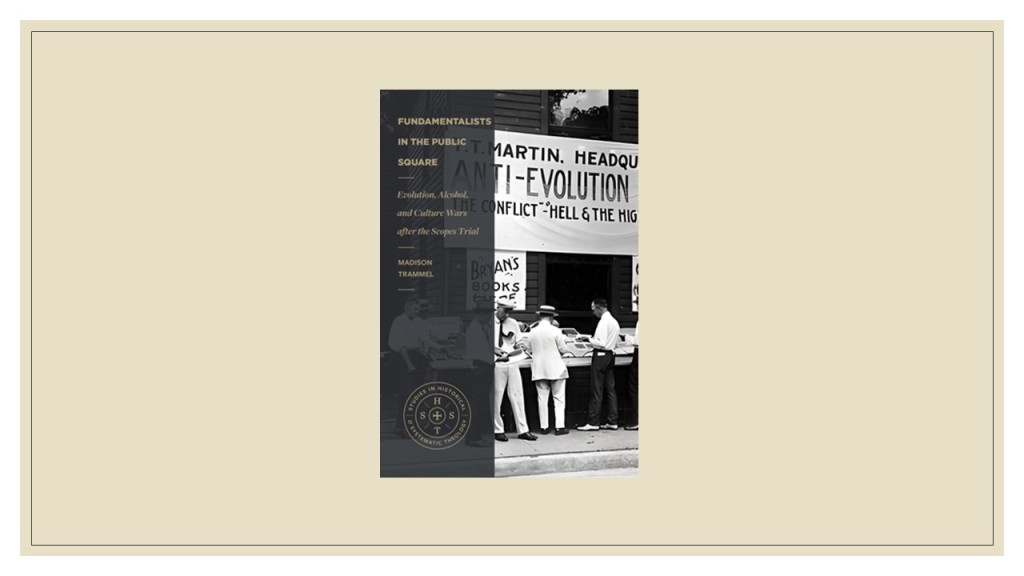
Fundamentalists in the Public Square (Studies in Historical and Systematic Theology), Madison Trammel. Lexham Academic. (ISBN: 9781683597186) 2023.
Summary: A counter-argument to the contention that fundamentalists retreated from activism in the public square after the Scopes trial, based on a study of newspaper reports.
Much of the history that has been written about fundamentalism contends that following the Scopes trial, there was a fundamentalist retreat from activist concerns. Madison Trammel, on the basis of a study of newspaper reporting in four states, proposes that at very least, this is an incomplete picture. his methodology was to focus on newspaper coverage of the two major social issues fundamentalists were engaged with during the period of 1920 to 1933, Evolution and Prohibition, to see if there was a drop off in coverage after the 1925 Scopes trial.
Trammel begins by reviewing the historiography of this period and the two streams, one of retreat and one of continuing activism, indicating his own research’s support of the second stream. Then chapters 2 and 3 take each issue, Evolution and Prohibition, and offer an analysis of the reporting. In general, activism in promoting opposition to the teaching of evolution and upholding Prohibition once it was enacted into law remained high during the period after Scopes.
In these chapters, I found quite striking the public role both William Jennings Bryan and pastor John Roach Straton played as public spokesmen for fundamentalist positions on both Evolution and Prohibition and that their deaths (Bryan in 1925 and Straton in 1930) may have played a greater role in stalling activism than the trial itself. More disturbing were the alignments between fundamentalists like Aimee Semple McPherson and the rejuvenated Ku Klux Klan in appealing to the same constituencies.
Chapter Four explores the influence of Dispensationalism on activism. Biblicist concerns and concerns about sin drove fundamentalist opposition to Darwin and drink. On the other hand, eschatological concerns de-emphasized social action for efforts in personal evangelism. It was striking to me that fundamentalism didn’t seem to have the resources to address the grinding poverty of the Depression, or the changing fabric of America shaped by immigration from both without and within as Blacks moved from the South to northern cities and to the west.
I wondered about the research methodology. Being from Ohio, I noted the heavy weighting of newspapers toward rural outlets. Many of the major papers in Ohio’s larger cities were not a part of the database used. I wondered if this might skew the accuracy of the analysis. I also wonder if New York, Pennsylvania, Ohio, and Illinois, all northern states, offer an accurate national profile.
This book raises larger questions as well about the narrowness of activism in the public square and the paucity of intellectual resources to meet modernist challenges, which require more than oratorical and political suasion skills. At the same time, Trammel helpfully challenges the over-simplifications of fundamentalist history in this crucial period. This is worthwhile in understanding matters as diverse as the continuing anti-science, and particularly evolution, stances in conservative churches, the focus on hot-button issues, and the approaches to societal influence in the public square.
____________________
Disclosure of Material Connection: I received a complimentary copy of this book from the publisher for review.
Pingback: The Month in Reviews: April 2024 | Bob on Books